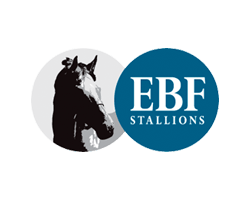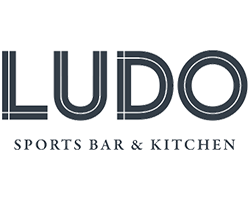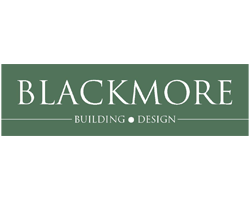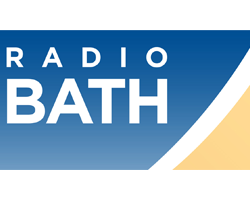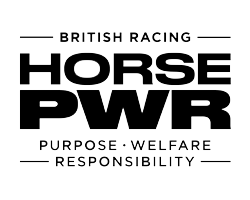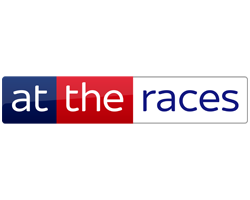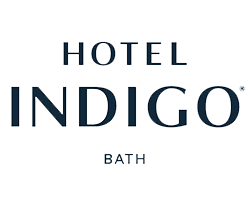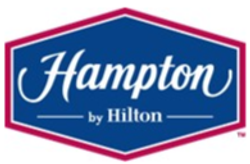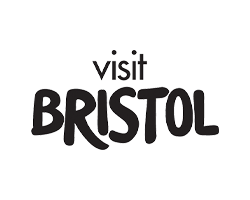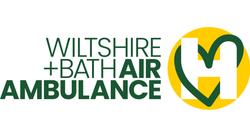A landmark in a notably historic City, Bath Racecourse has a fascinating story to tell, which keeps getting better and better with recent redevelopment and award wins over the last few years.
Racing at Bath dates to the early 18th century, King George IV was a frequent visitor in the early 1800's. During the WWII the course was used by the military and closed to racing.
We now have a boutique racecourse easily accessible from Bath city centre. It is the highest racecourse in England at 780 feet above sea level and this means we have stunning panoramic views of the Cotswold Walk and the beautiful city of Bath.
We are a friendly racecourse that is in the heart of the community and host not only racing but many types of events from weddings to outdoor festivals.
Whether you are a seasoned racing fan or seeking a memorable day out with friends, Bath Racecourse offers a unique blend of history, scenic beauty and first class service.
About Bath Racecourse
Bath Racecourse hosts around 20 flat races between March and October. Our course is a left-handed oval track which is just over one mile in length and is a key fixture on many of the top horse’s and jockey’s plans for the season.
We also have lots of live events either as part of racing fixtures and special music nights.
Part of Arena Racing Company (ARC), the racecourse received multi-million-pound redevelopment in 2016, which transformed our venue into the beautiful location you see today.
With modern facilities that give recognition to the history and heritage of the venue, the purpose-built venue accommodates guests on race days as well as for private events such as weddings or conferences.
Bath Racecourse Awards
2017 saw us named as one of the country's best small racecourses and granted the ROA Gold Standard Award, as well as achieving the Racecourse Association Showcase award for customer service. In 2018, we won Best Event at the RCA Showcase Awards for the Kids Takeover Racing initiative, and our Vintage Afternoon Tea hospitality package was recognised as runner up. We also won 'Best Casual Dining Experience' at the National Catering Awards.
In 2023, we also won the 'Warmest Welcome' category at the RCA Showcase Awards.
So we’re no strangers to winning on and off the track!
Bath Racecourse History
The first horse racing known to have taken place in this country was at Chester and near Edinburgh in around 1540. Charles II instigated racing at Newmarket, and it is possible that a meeting might have been held at Bath when he visited.
The official record of racing, the Racing Calendar, has its first results of a Bath meeting in 1728. Meetings were intermittently on Claverton Down during the 18th century. During the 1770s it reached its peak of success and popularity, but the number of entrants then declined.
One of the reasons for the lack of runners was the firm going. From 1784 meetings were held at Lansdown. Despite general approval of the move, they continued to be sporadic. In 1793 half of the grandstand collapsed when it was full of people, and several suffered broken limbs.
No racing took place in Bath for fifteen years after 1796, while the local economy was suffering and the threat of war and invasion by Napoleon meant it was regarded as a luxury. These were less important issues in 1811, when racing resumed with the consent of the landowner, Mrs Frances Blathwayt. This Lansdown course was not on the site of the present one; it lay between the site of Beckford’s Tower and Weston Lane. The meeting was a great success.
1823 saw a new race, the £100 Somersetshire Stakes, Bath’s most famous prize in the nineteenth century. Lord Palmerston won one of the early runnings. The 1824 meeting was described as the best ever, thanks to the clerk of the course, Mr Margerum.
Those who used to come to the racecourse up the hill from Bath were astonished in 1827 by their first sight of Beckford’s Tower.
In 1831 the track was moved to its present location. There is no record of why, but the advantage of moving was that it meant no roads needed to be crossed and a reasonably sized circuit could be made. Much of the original grandstand is still in use today.
Margerum’s wife owned properties, including one in Sydney Place that had once been rented by the family of Jane Austen. Margerum may have used his wife’s money to launch his career in racing. But by the 1840s his star was in decline and he was obliged to hand over his last property to a moneylender to pay off his debts.
The races were moved to just after the middle of May from 1851. This decision marked a turning point in Bath’s fortunes. The Epsom Derby was run a week later, and the Somersetshire thereby became the last opportunity to test a Derby candidate. Instead, Bath acquired a reputation for bursting the bubbles of Derby contenders who ran there.
1862 was the exception. Caractacus won the Somersetshire, despite his previously moderate form. In the Derby itself he gamely repelled all comers, but the drama did not end at the winning post. At first it seemed he was carrying less weight than before the race – that was overcome – and then came an accusation that he had taken the wrong course. Luckily for Caractacus the objection was deemed to be too late.
By now Bath’s race meetings had relatively little to do with the city itself. In contrast to the earlier part of the 19th century, they were now a component of the racing world and the presence of a historic city three miles away was much less relevant.
Racing continued relatively uneventfully until the end of WW1, when news came of the sale of two major estates, one of them being Lansdown. Members of the Race Committee felt unable to continue managing the races. They thought future success “was in high degree speculative”.
Mr Bushby, the pre-war clerk of the course, had faith in the racecourse. He persuaded the directors of the Newbury Racecourse Company that they could make it pay. They formed a syndicate and acquired the Bath course at auction for £12,750.
Gang warfare had been brewing since the end of the war, and in August 1921 it reached Bath. Gang members attacked each other in the centre of town, on Lansdown Hill and on the racecourse, where a gun was produced during a riot before racing. Despite all of that mayhem, there was no trouble at the races in the afternoon, nor the next day.
The most notorious event in the history of Bath races is the Francasal story of 1953. A gang of crooks plotted to win a minor race by running a good horse under the name of a bad one – a “ringer”. In order to maximise their winnings, they planned to cut the telephone wires to the course. This would prevent word reaching the racecourse bookmakers that the horse was being backed, so the odds would not be reduced. The fraudsters stood to collect £60,000 (about £1.3 million now).
Bookmakers queried the telephone failure with the Post Office and their investigations soon located the cut wire. The police were called and the trail soon led to the villains being arrested.
At their trial they pleaded that they had attempted a legitimate coup and that the two horses had been accidentally switched. After deliberating a long-running and complicated case, the jury could not reach agreement. The judge ordered a retrial.
It was thought at the time that the jury may have been confused by the complicated plot. However, that was not the case. One of the jurors had been nobbled. Police kept an eye on the jurors for the second trial and made sure no interference took place. At the end of it one man was cleared and the rest found guilty of conspiracy to defraud.
Northern Racing, now renamed Arena, bought the course in 2000 and have tried to re-engage with local people by staging meetings at times that attract them, at weekends and summer evenings, reminiscent of the racecourse’s early days when it was a major part of the Bath social scene.
2017 saw us named as one of the country's best small racecourses and granted the ROA Gold Standard Award, as well as achieving the Racecourse Association Showcase award for customer service. In 2018, we won Best Event at the RCA Showcase Awards for the Kids Takeover Racing initiative and our Vintage Afternoon Tea hospitality package was recognised as runner up. We also won 'Best Casual Dining Experience' at the National Catering Awards.
In 2023, we also won the 'Warmest Welcome' category at the RCA Showcase Awards!
The first horse racing known to have taken place in this country was at Chester and near Edinburgh in around 1540. Charles II instigated racing at Newmarket, and it is possible that a meeting might have been held at Bath when he visited.
Claverton races were being run in and possibly before 1721. The official record of racing, the Racing Calendar, has its first results of a Bath meeting in 1728. Meetings were intermittently on Claverton Down during the 18th century. During the 1770s it reached its peak of success and popularity, but the number of entrants then declined.
One of the reasons for the lack of runners was the firm going. From 1784 meetings were held at Lansdown. Despite general approval of the move, they continued to be sporadic. In 1793 half of the grandstand collapsed when it was full of people, and several suffered broken limbs.
No racing took place in Bath for fifteen years after 1796, while the local economy was suffering and the threat of war and invasion by Napoleon meant it was regarded as a luxury. These were less important issues in 1811, when racing resumed with the consent of the landowner, Mrs Frances Blathwayt. This Lansdown course was not on the site of the present one; it lay between the site of Beckford’s Tower and Weston Lane. The meeting was a great success.
1823 saw a new race, the £100 Somersetshire Stakes, Bath’s most famous prize in the nineteenth century. Lord Palmerston won one of the early runnings. The 1824 meeting was described as the best ever, thanks to the clerk of the course, Mr Margerum.
Those who used to come to the racecourse up the hill from Bath were astonished in 1827 by their first sight of Beckford’s Tower.
In 1831 the track was moved to its present location. There is no record of why, but the advantage of moving was that it meant no roads needed to be crossed and a reasonably sized circuit could be made. Much of the original grandstand is still in use today.
Margerum’s wife owned properties, including one in Sydney Place that had once been rented by the family of Jane Austen. Margerum may have used his wife’s money to launch his career in racing. But by the 1840s his star was in decline and he was obliged to hand over his last property to a moneylender to pay off his debts.
The races were moved to just after the middle of May from 1851. This decision marked a turning point in Bath’s fortunes. The Epsom Derby was run a week later, and the Somersetshire thereby became the last opportunity to test a Derby candidate. Instead, Bath acquired a reputation for bursting the bubbles of Derby contenders who ran there.
1862 was the exception. Caractacus won the Somersetshire, despite his previously moderate form. In the Derby itself he gamely repelled all comers, but the drama did not end at the winning post. At first it seemed he was carrying less weight than before the race – that was overcome – and then came an accusation that he had taken the wrong course. Luckily for Caractacus the objection was deemed to be too late.
By now Bath’s race meetings had relatively little to do with the city itself. In contrast to the earlier part of the 19th century, they were now a component of the racing world and the presence of a historic city three miles away was much less relevant.
Racing continued relatively uneventfully until the end of WW1, when news came of the sale of two major estates, one of them being Lansdown. Members of the Race Committee felt unable to continue managing the races. They thought future success “was in high degree speculative”.
Mr Bushby, the pre-war clerk of the course, had faith in the racecourse. He persuaded the directors of the Newbury Racecourse Company that they could make it pay. They formed a syndicate and acquired the Bath course at auction for £12,750.
Gang warfare had been brewing since the end of the war, and in August 1921 it reached Bath. Gang members attacked each other in the centre of town, on Lansdown Hill and on the racecourse, where a gun was produced during a riot before racing. Despite all of that mayhem, there was no trouble at the races in the afternoon, nor the next day.
The most notorious event in the history of Bath races is the Francasal story of 1953. A gang of crooks plotted to win a minor race by running a good horse under the name of a bad one – a “ringer”. In order to maximise their winnings, they planned to cut the telephone wires to the course. This would prevent word reaching the racecourse bookmakers that the horse was being backed, so the odds would not be reduced. The fraudsters stood to collect £60,000 (about £1.3 million now).
Bookmakers queried the telephone failure with the Post Office and their investigations soon located the cut wire. The police were brought in and the trail soon led to the villains being arrested.
At their trial they pleaded that they had attempted a legitimate coup and that the two horses had been accidentally switched. After deliberating a long-running and complicated case, the jury could not reach agreement. The judge ordered a retrial.
It was thought at the time that the jury may have been confused by the complicated plot. However, that was not the case. One of the jurors had been nobbled. Police kept an eye on the jurors for the second trial and made sure no interference took place. At the end of it one man was cleared and the rest found guilty of conspiracy to defraud.
Northern Racing, now renamed Arena, bought the course in 2000 and have tried to re-engage with local people by staging meetings at times that attract them, at weekends and summer evenings, reminsicent of the racecourse’s early days when it was a major part of the Bath social scene.


